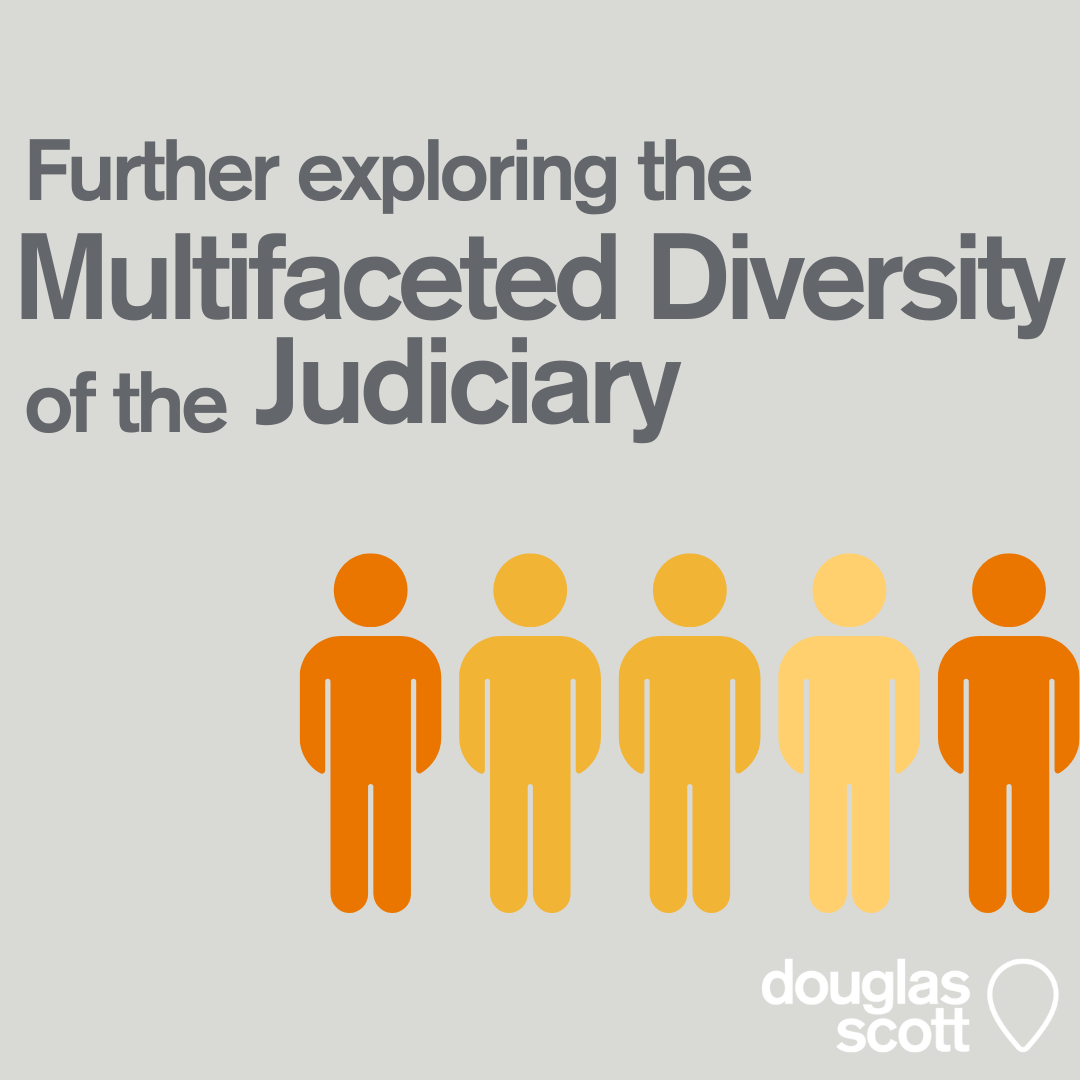Diversity of the Judiciary 2024 – Part II: Other factors
Posted in Latest News on 25 Jul 2024

Every year, the Ministry of Justice publishes an annual Diversity of the Judiciary report.
It is the most comprehensive analysis of the legal market in the United Kingdom, and it gives us a real insight into what is going on regarding attempts to diversify what is seen as a traditional and potentially old-fashioned profession. This year’s report has just been published, so we thought it was well worth diving into some of the deeper stats and seeing precisely what the results are saying about the judiciary at the moment.
While the significant headline figures from the report were about gender and ethnicity (you can read our analysis on them here), several other interesting areas are well worth looking at. One of these is age. The statistics show that the judiciary does appear to be getting slightly older, although not by a considerable margin. 40% of barristers are aged over 50, with 30% of solicitors and 39% of Chartered Legal Executives falling into this category. As might be expected, people who fall into these higher age brackets have a greater degree of experience: for those who have 0-6 years PQE experience, 89% of solicitors, for example, are under 40, while of those solicitors who have over 20 years experience, 49% are between 50-59, with another 24% between 60-69.
Broadly speaking, these numbers are repeated for chartered legal executives and barristers (with a broader swing for CLEs towards those higher age brackets and levels of PQE), showing a clear pattern. Obviously, experience is still valued in the workplace, especially in this time of significant generational change. For example, our most recent salary survey found that millennials were now the most dominant generation in the workplace. However, age and experience still seem to be valued throughout the legal industry, especially at the higher levels of judicial office.
In terms of other characteristics, the report is a little more inconclusive, primarily due to the report only really looking at applications for judicial appointments. However, what we can see from this data is that the statistics for these applications regarding disability are lower for those who have a disability (8%) in comparison to the 11% who didn’t. There were some interesting numbers surrounding social mobility as well, with a lower recommendation rate for those who attended a state school (10%) compared to those who attended an independent or fee-paying school (13%).
Almost all applicants, however, attended university (99%), which shows that mobility isn’t playing a part at that crucial late stage of education. However, those who were the first in their family to go to university were less likely to be recommended than those who weren’t, at 9% and 13%, respectively. Finally, in terms of sexual orientation, there was better news: in this instance, there was a higher proportion of recommendations to applications (7% and 6%, respectively). They also have a higher recommendation rate (13%) than people who identified as heterosexual (10%), which shows steps that have been taken to redress this historical imbalance are, at least, bearing some fruit.
Overall, there are signs that the UK legal and judicial system is taking positive steps to be more inclusive and open to those from traditionally non-legal backgrounds. However, as this report highlights, there are still areas that need attention, especially areas such as disability and social mobility. We here at Douglas Scott will continue to take a keen interest in these areas.
Latest insight
-
What is the top priority for law firm leaders?
20 Jan 2025 -
How to make your 2025 Legal dreams come true!
13 Jan 2025 -
What poor mental health is costing firms...
13 Nov 2024 -
Beyond the surface: How law firms are quietly advancing social mobility
05 Nov 2024 -
Which training providers are doing the best out of the SQE?
29 Oct 2024